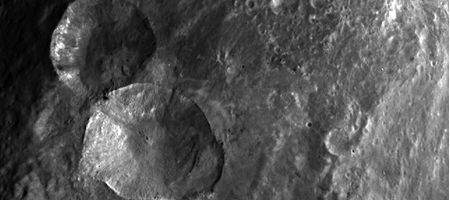The asteroid Vesta is more like a planet or a moon, new data from NASA’s Dawn spacecraft shows.

Vesta appears as a protoplanet – a layered, planetary building block with an iron core, and the only one known to survive the earliest days of the solar system.
It has a radius of approximately 68 miles, and seems to have been separated into a crust, mantle and iron core about 4.56 billion years ago, in a similar way to the planets and our moon.
“Dawn’s visit to Vesta has confirmed our broad theories of this giant asteroid’s history, while helping to fill in details it would have been impossible to know from afar,” says Carol Raymond, deputy principal investigator at NASA’s Jet Propulsion Laboratory.
“Dawn’s residence at Vesta of nearly a year has made the asteroid’s planet-like qualities obvious and shown us our connection to that bright orb in our night sky.”
Dawn observed a pattern of minerals exposed by deep gashes created by space rock impacts, which may support the idea that Vesta once had a subsurface magma ocean.
An unexpected finding was that the asteroid’s central peak in the Rheasilvia basin in the southern hemisphere is much higher and wider, relative to its crater size, than the central peaks of craters on bodies like our moon.
Vesta also bears similarities to other low-gravity worlds like Saturn’s small icy moons, and its surface has light and dark markings that don’t match the predictable patterns on Earth’s moon.
“We know a lot about the moon and we’re only coming up to speed now on Vesta,” says Vishnu Reddy, a framing camera team member. “Comparing the two gives us two storylines for how these fraternal twins evolved in the early solar system.”
The new data means Dawn scientists now can date the two giant impacts that pounded Vesta’s southern hemisphere and created the basin Veneneia about two billion years ago and the Rheasilvia basin about one billion years ago.
“The large impact basins on the moon are all quite old,” said David O’Brien, a Dawn participating scientist from the Planetary Science Institute in Tucson, Ariz. “The fact that the largest impact on Vesta is so young was surprising.”
The data also confirms that a group of meteorites found on Earth did, as theorized, originate from Vesta. The signatures of pyroxene, an iron- and magnesium-rich mineral, in those meteorites match those of rocks on Vesta’s surface.
Such meteorites account for about six percent of all those falling on Earth, making Vesta one of the largest single sources for Earth’s meteorites.






